Can I Switch My Ap Art Portfolio From Design to Drawing
In 2019, College Board revamped the construction and assessment of the Advanced Placement Art and Blueprint Portfolios (previously known every bit AP Studio Art). This threw many teachers for a loop. After spending years perfecting pacing schedules and lesson plans, teachers weren't exactly certain where to start. Whether you lot are new to AP or a veteran instructor, understanding the portfolio can be a bit confusing.
Allow's pause down what this portfolio is all about and so we can set students for submission.
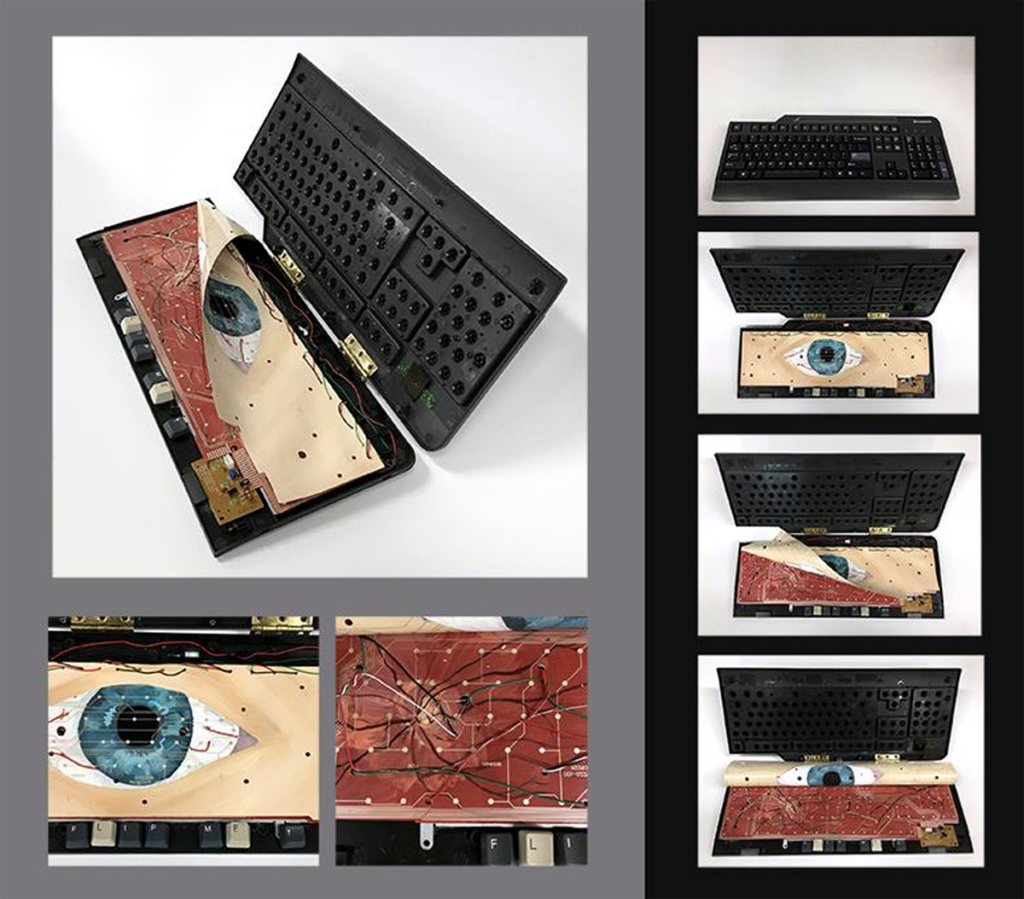
The AP portfolio is a collection of procedure images, finished artworks, and writing that emphasizes critical thinking and intentional decision-making. Artworks must show an understanding of blueprint and fine art concepts. They must also show a synthesis of materials and ideas through do, experimentation, and revision. In the ii portions of the exam, students volition create anywhere from six to twenty developed artworks.
Students can develop artwork for either 2D Design, 3D Design, or the 2nd Cartoon portfolio. They can submit to more than one portfolio in a given yr (or over two years), merely in that location must be completely separate and unique artworks per portfolio. While all three portfolios are structured the same, each is assessed based on dissimilar visual concerns. Therefore, each portfolio has a specific rubric with dissimilar criteria.
Portfolios are submitted both digitally and physically (see beneath) for scoring. The deadline for submission is typically within the get-go two weeks of May.
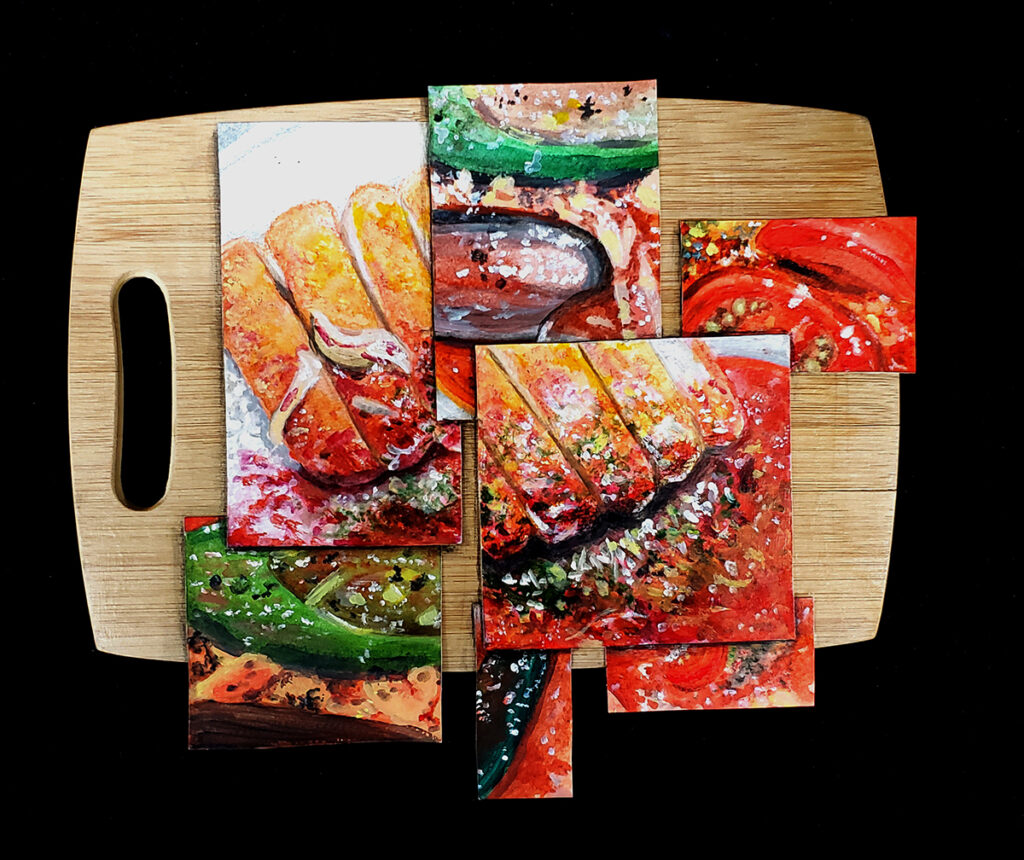
To help make the requirements easier to understand, we created an at-a-glance guide merely for y'all! This will be a handy download to keep bookmarked on your computer or posted on your bulletin board.
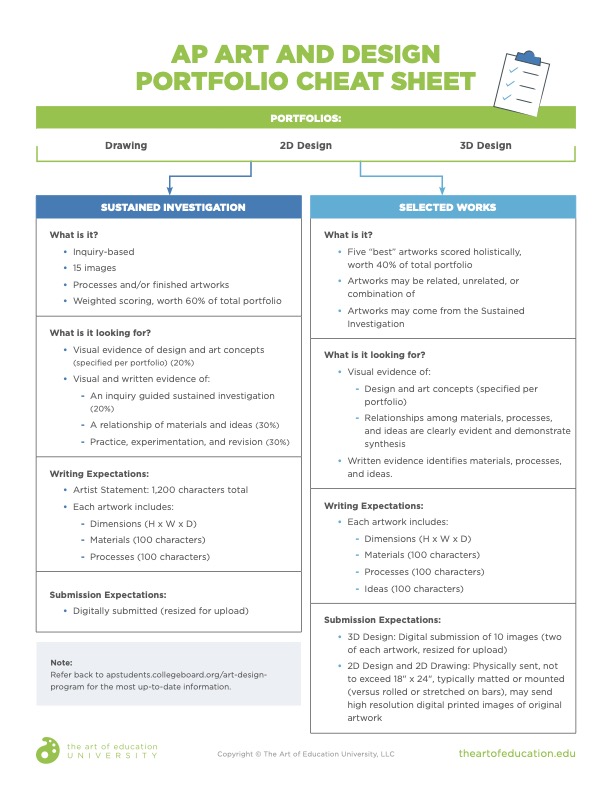
Download Now!
The Breakdown
In order to make the shift into the portfolio requirements, there are a few large changes from the previous portfolio to go on in mind.
Structure: The portfolio is divided into two sections instead of three.
Previously, the AP portfolio consisted of 3 sections:
- Breadth: 12 artworks that demonstrate a range of methods and approaches.
- Concentration: 12 artworks that respond to a chosen theme or topic.
- Quality: 5 artworks that show the best quality, pulled from the Breadth or Concentration sections or completely separate artwork.
The new portfolio consists of the following ii sections:
- Sustained Investigation: fifteen images relating to a student-developed enquiry question.
- Selected Works: 5 high-quality artworks.
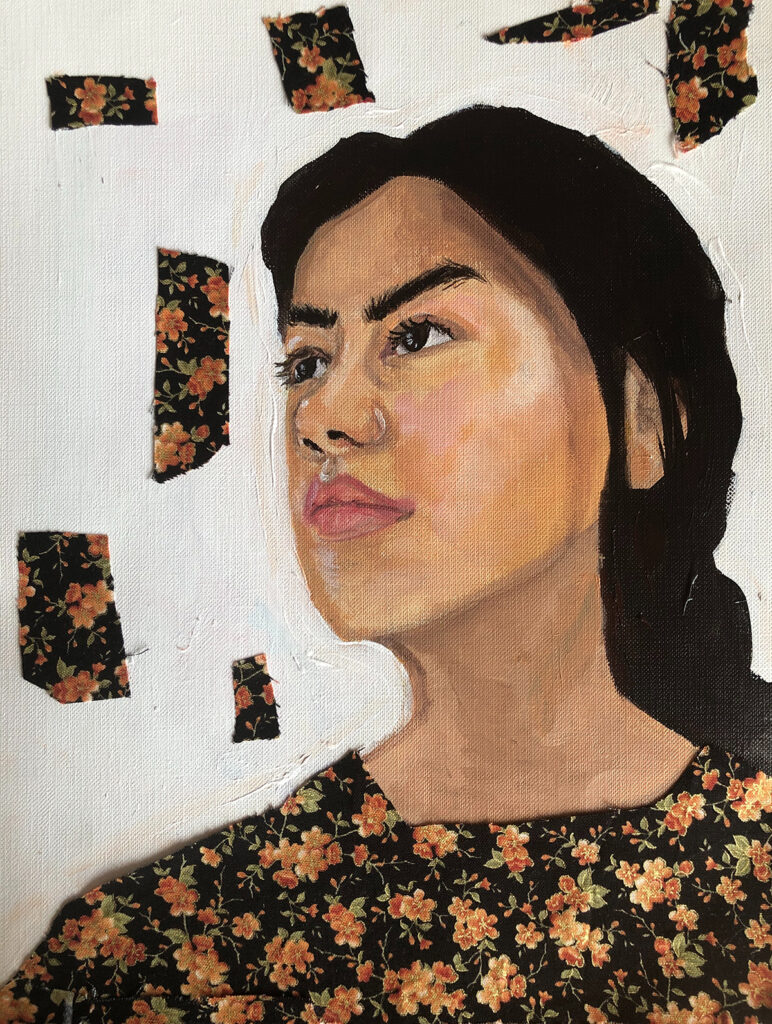
Artwork Requirements: At that place are fewer artworks required and the expectations accept changed.
In the previous portfolio, students created around 24 resolved artworks. Now, AP asks students to submit 15 images for the Sustained Investigation and 5 artworks for the Selected Works portion.
Students practice not accept to submit 15 finished artworks for the new Sustained Investigation only rather xv "images." This is a fleck challenging to wrap your caput around. With this new Sustained Investigation, the emphasis is on demonstrating practice, experimentation, and revision through a variety of images. Of course, students can submit 15 finished artworks in which those processes are visually evident. Students could also, for example, submit 8-10 finished artworks along with some revision and procedure images. Or a student could even submit i complex artwork, such every bit a landscape, with 14 process and revision images.
The Selected Works can come from the Sustained Investigation but they don't have to. Therefore, students exercise not demand to develop more than than 15 artworks. This feels more than manageable than the previous requirements, especially with limited class time.
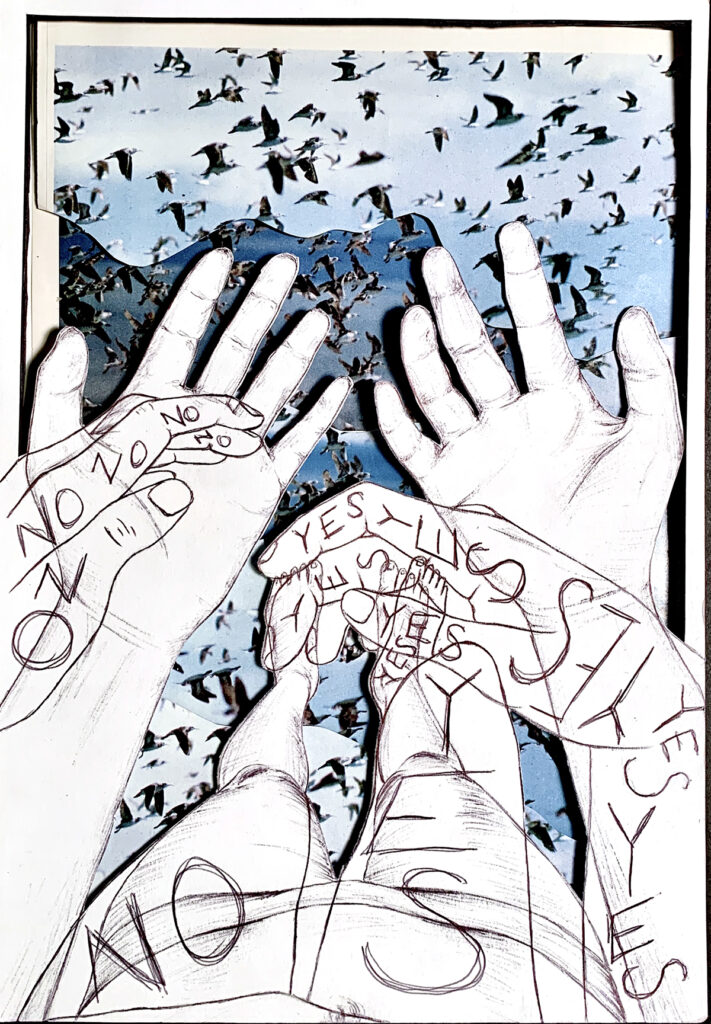
Assessment: The portfolio focuses on the development of ideas, processes, and synthesis of media over time.
Both Sustained Investigation and Selected Works are steeped in connecting visual artistic decisions evident in the artwork with disquisitional thinking and intentional decision making.
The Sustained Investigation is inquiry-based. Starting with an inquiry question, students then develop artworks that answer the research. This ofttimes results in the cosmos of a new fix of questions that leads students down a rabbit hole of conceptual thinking. According to AP, the artworks must "demonstrate your inquiry-based sustained investigation of materials, processes, and ideas done over time through practise, experimentation, and revision."
Similar to the previous portfolio, the Selected Works includes the students' best works. All the same, these works also should "demonstrate skillful synthesis of materials, processes, and ideas."
For example, a educatee may create a self-portrait painted with acrylic paint. In this portfolio, the student would demand to explain the why, the how, and the connexion betwixt decisions made and the completed artwork.
When information technology comes to assessment, AP provides a rubric with established criteria for each section. Make sure to reference these rubrics every bit you appraise educatee work. While all three portfolios address the same overarching concepts of the Sustained Investigation and the Selected Works, each portfolio (2nd Blueprint, 2D Drawing, or 3D Blueprint) has different criteria for their visual concerns and artistic methods.
The Sustained Investigation has weighted categories inside the rubric and is scored on a 3 bespeak scale. Information technology is weighted heavily at 60% of the total portfolio score. The Selected Works portion is scored holistically on a five point scale and is worth xl% of the overall score.
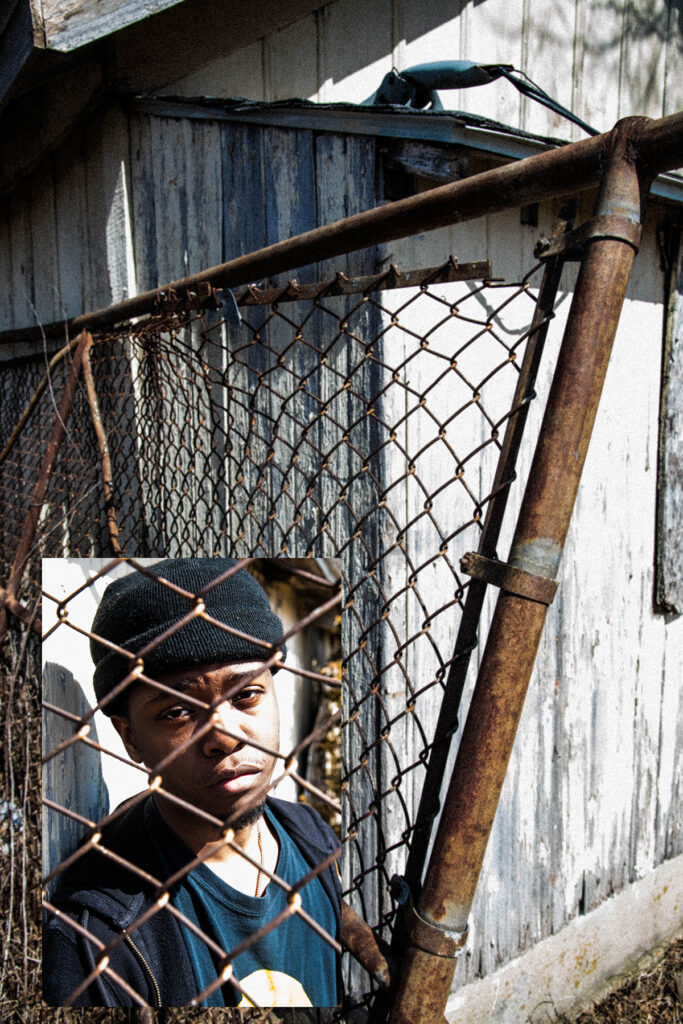
Writing: The portfolio includes writing which is weighted more heavily than in the past.
Similar to the previous portfolio, students still write an creative person argument that is 1200 characters, carve up into two sections that are 600 characters each. This statement examines their Sustained Investigation from inquiry question to supporting bear witness. Students utilise this space to communicate ideas. The first department identifies the inquiry question. The 2nd section describes how processes and ideas used in their artworks chronicle to their inquiry. Both sections are assessed using unlike parts of the Sustained Investigation rubric.
In addition, each image has space to include a short corporeality of text. For each image, students have 100 characters to explain processes explored and 100 characters for materials used. This is the case for both the Sustained Investigation and Selected Works. According to the rubric, much greater consideration is given to student writing than in the previous portfolio.
Submission and Scoring: The portfolio submission process is like to previous years.
The Sustained Investigation is a digital submission process for all three portfolios through the AP College Board site. The Selected Works are a digital submission for the 3D Design portfolio while the 2D Design and 2D Cartoon portfolios are physically packed upward and sent to AP. Your school's AP coordinator receives portfolios and labels for students to pack their works, besides as large boxes to ship the work to AP. Artworks must be flat (no stretcher bars), no larger than eighteen×24" (though loftier-quality printed reproductions are acceptable), and can be matted and/or mounted for rigid support. Artwork is returned back to students' homes after scoring, sometime in late summer.
Both digital and physical works will be scored by teams of art educators who apply for the opportunity to be an AP Reader. These readers attend preparation with exercise portfolios. Artwork and computers line tables in a large hanger. Because of the big amount of work to score, readers spend mere minutes of time reviewing each portfolio. Therefore, their scoring practices must be well-aligned with the rubrics. Portfolios are scored by more than one reader to check for reliability and each section is scored by a unlike group of readers.
The portfolios are then scored out of a full of vi. You lot will notice, however, that the final score is out of a possible v points. When scoring out of half dozen possible points, a bong curve is created to develop a mean, and scores are aligned to a v-indicate calibration.
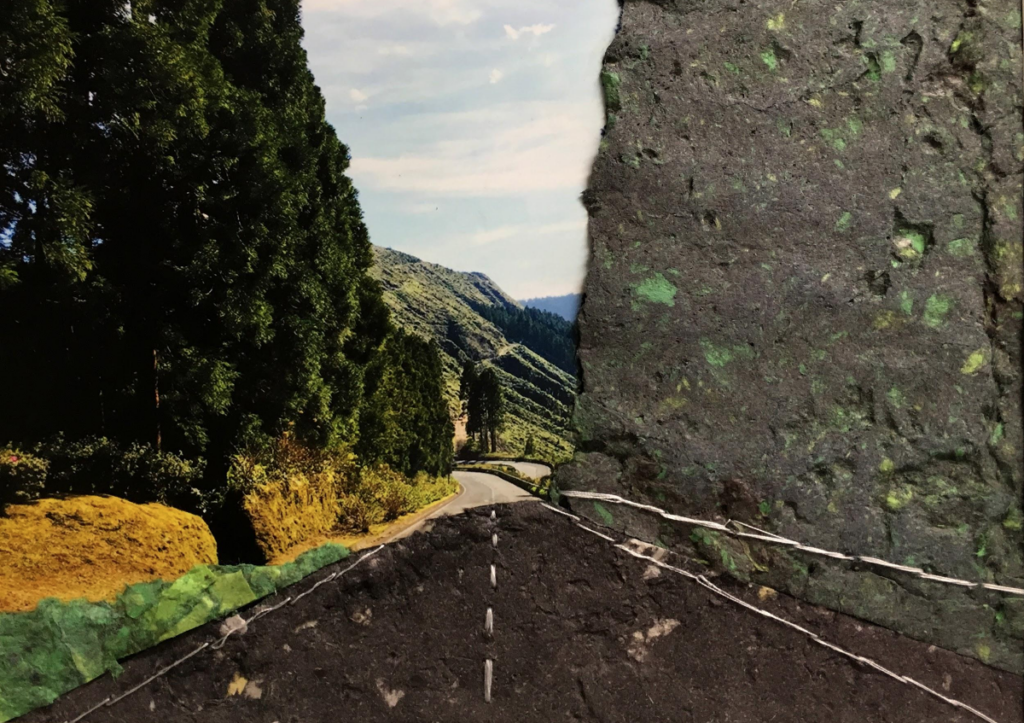
Navigating the Portfolio
To learn more almost this process and about the AP exam, you tin can attend a workshop offered by College Board. The in-person, week-long sessions are often hosted by local universities around the US. I recommend attending a session to farther empathize the portfolio and scoring processes. AP Classroom is another keen resource for you and your students. Teachers can register for AP Webinars and subscribe to the AP YouTube Channel for videos that explain these concepts further. Y'all can even have a look at previous sample portfolios and scoring rationale (this one is for second Design) through the College Board site.
As you learn to navigate the ins and outs of the Advanced Placement Art and Design portfolios, you will detect yourself pushing students' thinking. While the new portfolio is challenging, it's exciting to watch students make deeper connections with their artmaking practices. Completing a portfolio and submitting it to AP is a huge achievement. Regardless of the score, celebrate your students (and yourself!) for this tremendous feat.
For more conversations around AP Art and Pattern, bank check out these two podcast episodes:
- Breaking Downward AP Portfolios, Function 1 (Ep. 289)
- Breaking Downwardly AP Portfolios, Part 2 (Ep. 290)
What is notwithstanding puzzling to you about the updated AP requirements?
What other AP resources have been helpful to you?
Mag articles and podcasts are opinions of professional person education contributors and exercise not necessarily represent the position of the Art of Education University (AOEU) or its bookish offerings. Contributors utilise terms in the way they are near often talked near in the telescopic of their educational experiences.
Source: https://theartofeducation.edu/2022/02/11/feb-how-to-easily-break-down-ap-art-and-design-portfolios/
Belum ada Komentar untuk "Can I Switch My Ap Art Portfolio From Design to Drawing"
Posting Komentar